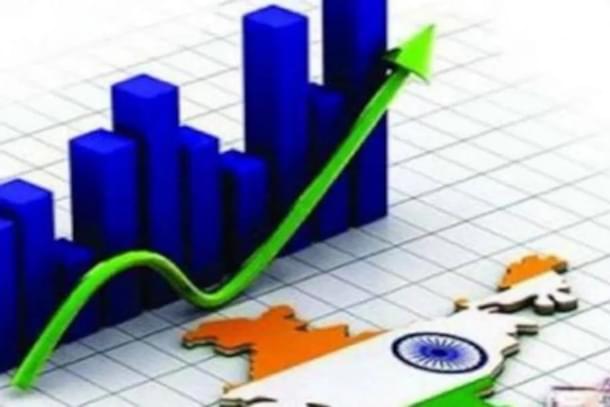News Brief
India’s Economic Momentum Strengthens: World Bank Upgrades FY25 Growth Forecast To 7 Per Cent
Kuldeep Negi
Sep 04, 2024, 03:06 PM | Updated 03:06 PM IST
Save & read from anywhere!
Bookmark stories for easy access on any device or the Swarajya app.


The World Bank has raised its forecast for India's GDP growth to 7 per cent for FY25, an improvement from its earlier prediction of 6.6 per cent.
The uptick in the growth forecast comes due to increased infrastructure investments and growing household investment in the real estate sector.
However, the report pointed out that urban youth unemployment is still high at 17 per cent and India is facing a decline in its global market share in labour-intensive industries like apparel and footwear.
India emerged as the fastest-growing major economy with an 8.2 per cent growth rate in the last fiscal year.
The World Bank expects this momentum to continue, predicting growth of 7 per cent for the current fiscal and 6.7 per cent for FY26.
"Amid challenging external conditions, India’s growth is projected to remain strong at 7.0 percent in FY24/25" the report said.
The report added that the growth was boosted by public infrastructure investment and an upswing in household investments in real estate.
According to the World Bank's forecast, industrial growth will likely decrease to 7.3 per cent in FY26 from 7.6 per cent in FY25.
After setbacks caused by the pandemic, industrial growth had bounced back to 9.5 per cent in FY24.
The bank also projected a decline in investments in the economy as captured by Gross Fixed Capital Formation (GFCF).
According to the World Bank, GFCF growth is expected to reduce to 7.8 per cent in FY25, down from 9.0 per cent in FY24. The GFCF growth rate stood at 6.6 per cent in FY23, the data showed.
In a global environment of declining IT investments, the World Bank predicts that service sector growth will reduce to 7.4 per cent in FY25 and 7.1 per cent in FY26, down from 7.6 per cent in FY24.
Meanwhile, agricultural growth is expected to see a significant rise, jumping to 4.1 per cent in FY25 from just 1.4 per cent in FY24.
When it comes to trade, the World Bank noted that recent years have seen an uptick in protectionism across the global trade landscape.
“The post-pandemic reconfiguration of global value chains has created opportunities for India. India has boosted its competitiveness through the National Logistics Policy (NLP) and digital initiatives that are reducing trade costs. However, it also notes that tariff and non-tariff barriers have increased and could limit the potential for trade-focused investments,” the World Bank said, Indian Express reported.
For FY25, the World Bank forecasts a 7.2 per cent growth in exports of goods and services compared to FY24. The growth is expected to stay at 7.2 per cent in FY26 before climbing to 7.9 per cent in FY27, according to the data.
Imports are projected to grow by 4.1 per cent in FY25, significantly lower than the 10.9 per cent growth recorded in FY24.
According to the World Bank, imports will rise to 6.3 per cent in FY26 and 7.3 per cent in FY27.
“In addition to IT, business services, and pharma where it excels, India can diversify its export basket with increased exports in textiles, apparel, and footwear sectors, as well as electronics and green technology products,” said Auguste Tano Kouame, World Bank’s Country Director in India.
Despite these opportunities, India has been losing out to competitors in labour-intensive industries like apparel and footwear.
According to Nora Dihel and Ran Li, senior economists and co-authors of the report, India's share of global apparel exports dropped from 4 per cent in 2018 to 3 per cent in 2022 due to higher production costs and declining productivity.
“To create more trade-related jobs, India can integrate more deeply into global value chains, which will also create opportunities for innovation and productivity growth,” Dihel and Li said in a statement.
The World Bank also forecasted a gradual increase in India’s current account deficit, rising from 1.1 per cent in FY25 to 1.2 per cent in FY26 and further to 1.6 per cent in FY27.
The current account deficit stood at 0.7 per cent in FY24 compared to 2 per cent in FY23.
“With a narrowing current account deficit and strong foreign portfolio investment inflows, foreign exchange reserves reached an all-time high of $670.1 billion in early August, equivalent to over 11 months’ cover,” the World Bank said.
Kuldeep is Senior Editor (Newsroom) at Swarajya. He tweets at @kaydnegi.





